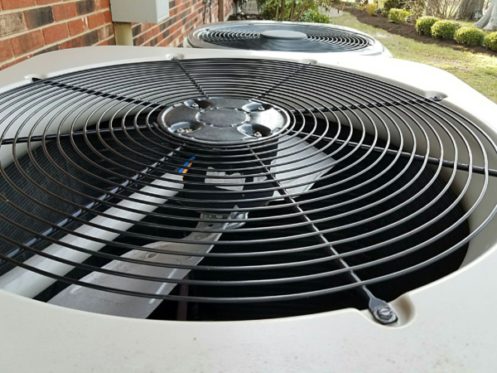By now, most homeowners in the Stroudsburg, PA, area know about or at least have heard of SEER ratings. They’re the official scale that tells you how efficient an air conditioner is. Since they’ve appeared on the ENERGY GUIDE labels you’ll find on every air conditioner since the late 1970s, they’re hardly new. However, even though most homeowners know that SEER ratings exist, not all of them understand what they mean. And now, there’s a new standard that’s about to take its place, called SEER2. To help with understanding this new standard, here’s an explanation of SEER ratings and how the new SEER2 ratings differ.
What Is a SEER Rating?
SEER is an acronym for seasonal energy efficiency ratio. As that name implies, a SEER rating is a simple scale you can use to judge how efficiently a given air conditioner should perform across an average cooling season. The scale is simple enough to interpret, too. In short, the higher the SEER rating that an AC has, then the more efficient it is.
To assign a SEER rating to an air conditioner, each unit undergoes a series of tests in a laboratory environment. For one of the test runs, the laboratory simulates an outside temperature of 82 degrees Fahrenheit and an indoor temperature of 80 degrees F, with a relative humidity of 50%. Then, the test repeats two more times, with lower relative humidity each time.
From there, the testers take an average of the total energy consumed during the tests and plug those values into a formula. The formula’s purpose is to simulate how an end user would use the air conditioner during an average cooling season. The formula assumes that nobody would use their air conditioner at 100% power throughout the entire season. So, it uses a proportional usage model to come up with an energy total and then divides the result by 100.
The resulting number is the SEER rating you’ll find on an air conditioner’s ENERGY GUIDE label. With it, you can compare two different systems to figure out which will offer better energy efficiency over its lifetime.
Why Are SEER Ratings Getting Replaced?
Put simply, SEER ratings don’t do a great job of simulating real-world air conditioner usage. The main problem was that the testing didn’t account for some of the things that affect an air conditioner’s performance and energy efficiency when installed in an actual home. The biggest omission in the tests was that they didn’t include the use of any ductwork. In the real world, a central air conditioner’s useless without the ductwork required to carry cool air throughout a home.
That omission is a big deal, too. That’s because ductwork limits the total flow of air that the air conditioner can output. That limit results in something called static pressure. That’s the term for the resistance that the air conditioner’s blower encounters while trying to force air throughout a home’s ductwork. Without accounting for real-world static pressure, an air conditioner will appear more efficient in a lab than it will in the real world.
How Does SEER2 Address This?
To improve on the original SEER testing regimen, the US Department of Energy (DOE) redesigned the tests for SEER2 ratings to include increased static pressure. Specifically, it increased the static pressure applied to each air conditioner fivefold compared to the previous test standards. That brings the test conditions far more in line with the conditions created by the ductwork in an average home.
Plus, the DOE made a handful of smaller changes to the tests to allow them to account for improvements to air conditioner technology that didn’t exist when they developed the original SEER tests. For example, they altered the tests to account for fan off delays and set limits on the size of the evaporator coil that manufacturers can use with an air conditioner during testing. They have also added a variable speed factor to the SEER2 rating system since variable-speed motors are now a key component in most high-efficiency air conditioners.
What Does SEER2 Mean for You?
For homeowners, the most important thing to know about SEER2 ratings is that they still work like SEER ratings. The higher the SEER2 rating, the more efficient the air conditioner. However, since the SEER2 testing procedures produce a result that’s more in line with real-world conditions, you’ll find that most units achieve lower scores than they once did. For example, an air conditioner that had a SEER rating of 15 will now have a SEER2 rating of 14.3.
Here in Pennsylvania, that means the minimum efficiency standards for all new ACs have changed, too. So, if you’re purchasing a new system right now, you won’t be able to find one for sale with a SEER rating lower than 14 or a SEER2 rating lower than 13.4. As you shop, you’ll need to keep the difference between the two rating systems in mind as well as what they can mean to your bottom line.
Of course, you can also simplify your search for a new air conditioner for your home by turning to the experts at R.J. Groner Inc.. Our team of expert HVAC technicians understands the SEER and SEER2 standards better than anyone. After all, R.J. Groner Inc. has served the Stroudsburg, PA, area for over 70 years. You won’t find a better place to turn for expert HVAC installation, repair and maintenance as well as comprehensive plumbing and indoor air quality services. So, if you’re in the market for a new air conditioner for your Stroudsburg, PA, home, contact R.J. Groner Inc. today!






